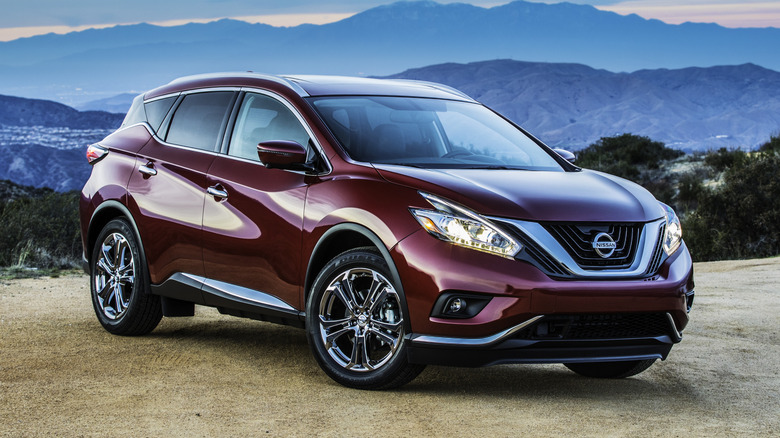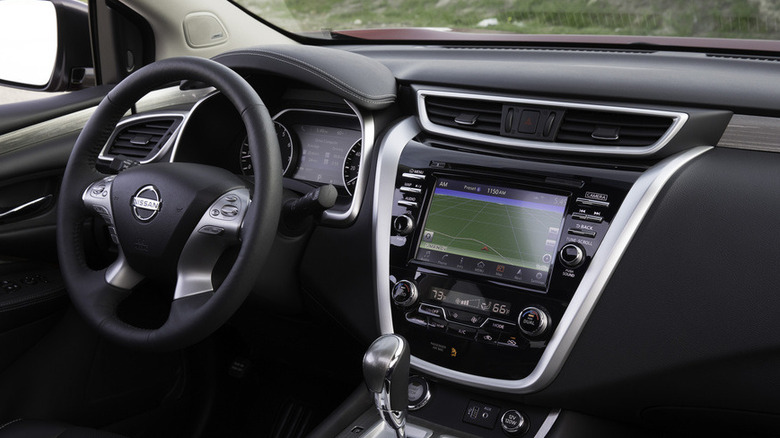Though The Nissan Murano Is Reliable, It Still Needs Repairs - Here Are The Most Common Problems
Nissan isn't in the strongest position right now. Sales are down, dealerships are closing down, and many of its once-dominant nameplates are fighting just to stay relevant. That includes the Murano — a midsize two-row crossover that, despite its age, has quietly become one of the most important anchors in Nissan's lineup.
While the Murano has generally been a reliable pick, by 2024, the third-generation model was well past its prime. After nearly a decade on the market with only minor updates, it was long overdue for a redesign, and for 2025, it finally gets one. Entering a fresh fourth generation with new styling, a turbocharged engine, and a traditional nine-speed automatic transmission, it's arguably the most useful update this crossover has seen in years, and it might just help Nissan recapture some much-needed momentum.
That said, used buyers eyeing anything from 2015 through 2024 should still go in with eyes open, as despite its strong reliability scores overall, the Murano's third generation had a handful of recurring problems — especially with its CVT. From low-speed transmission shudder and AWD fluid leaks to camera visibility glitches and ABS actuator recalls, there's enough frequency to be considered common, especially on earlier V6 and CVT models.
2015-2021 CVT era Murano has two issues worth checking for
If you're looking at a 2015 to 2021 Murano, you're looking at the tail end of Nissan's long-running CVT problems. It shows up when pulling away from a stop or accelerating gently — a faint vibration through the pedal or steering wheel that sometimes triggers a check engine light. Nissan published a detailed technical bulletin that applies directly to the Murano from 2015 through 2021, with a step-by-step guide for diagnosing and resolving the issue. Depending on the situation, the fix ranges from a software update to a full valve body or transmission replacement.
It was common enough that Nissan extended the CVT warranty through a class-action settlement for 2015-2018 model years, with reimbursements available to drivers who had already paid out of pocket. That warranty extension is no longer active for new claims, but it's a solid indicator of just how widespread the issue was across those early years.
There's also a second problem worth watching if you're looking at AWD models from 2015 to 2017. In these, Nissan identified a fluid leak where the front right axle enters the transfer case. In some cases, it happened after a transmission replacement — it wasn't dangerous, but it could leave your driveway stained and your driveline low on fluid. Dealers were given a specific service bulletin (NTB17-003) outlining the inspection and seal replacement process — quick to fix if you catch it early.
2018-2020 models also had some safety related issues
The latter years of the third-gen Murano brought fewer mechanical complaints, but several important safety-related recalls are tied to specific production runs. Not all of these are major, but all are worth confirming the car's VIN number before buying used. First up is a rear camera visibility problem on over 50,000 2018-2019 Murano models. The system allowed drivers to tweak the brightness, contrast, and other display settings, but the setting screen itself inadvertently stayed layered over the camera feed when the car was put in reverse. It would either cover the live camera feed or leave the display completely black with no rearview visible at all. Nissan fixed it with a simple software update, but it's the kind of thing that's easy to miss if the car's never been back to a dealer.
Next, a more serious recall affected the ABS actuator on 2015–2018 models. In some cases, a fluid leak inside the actuator could cause an electrical short — and, in rare circumstances, a fire. Nissan instructed drivers to park outside if the ABS warning light stayed on, and issued a free replacement for owners. And in 2020, a batch of Muranos built with faulty front lower control arms was flagged for inspection.
The defect could allow the ball joint to separate while driving, so Nissan issued a recall requiring dealers to inspect and replace the affected parts. Even 2024 models weren't totally immune — a tiny group of vehicles (six in the U.S.) was recalled to re-bond the rear quarter-glass due to improper adhesive. That one's a quick cosmetic fix, but again, worth verifying before you buy.
Methodology
To keep this list useful, we focused on patterns. Every issue here is backed by either an official recall, a technical service bulletin, or a warranty action that points to a recurring fault, not just a few angry forum posts. That's why we highlighted things like the CVT "judder" from 2015–2021, which Nissan detailed across multiple bulletins, and the ABS actuator recall tied to specific VIN batches.
We also included the transfer-case leak that hit early AWD models and the rear camera glitch that earned a federal safety violation. So what's missing? Mainly, the 2025 Nissan Murano and the new fourth-generation redesign, since these models are too new to show real-world trends yet. You won't find long-term reliability issues in a car that's only been on the road for a few thousand miles.
Data like common issues, recall investigations, and failure rates take time to surface in a meaningful amount — usually a year or two after launch. Until then, the outgoing 2015-2024 generation tells a far clearer story. That's where we focused — on the problems you're most likely to encounter today.



